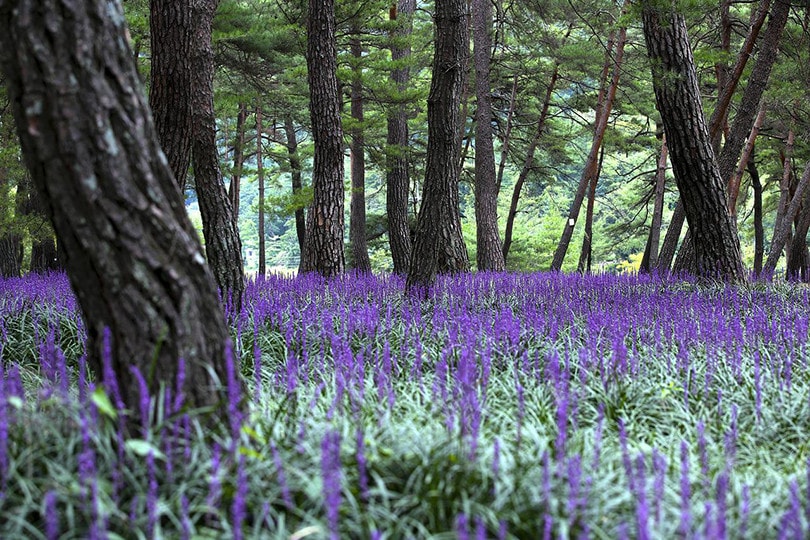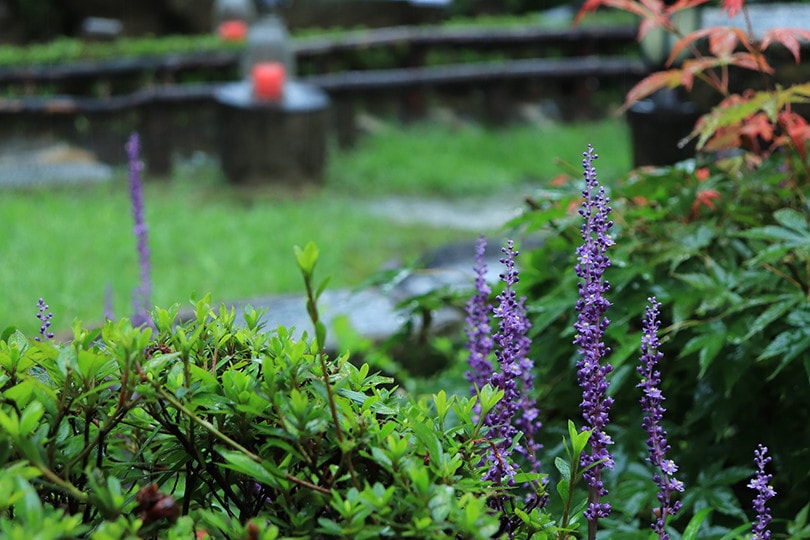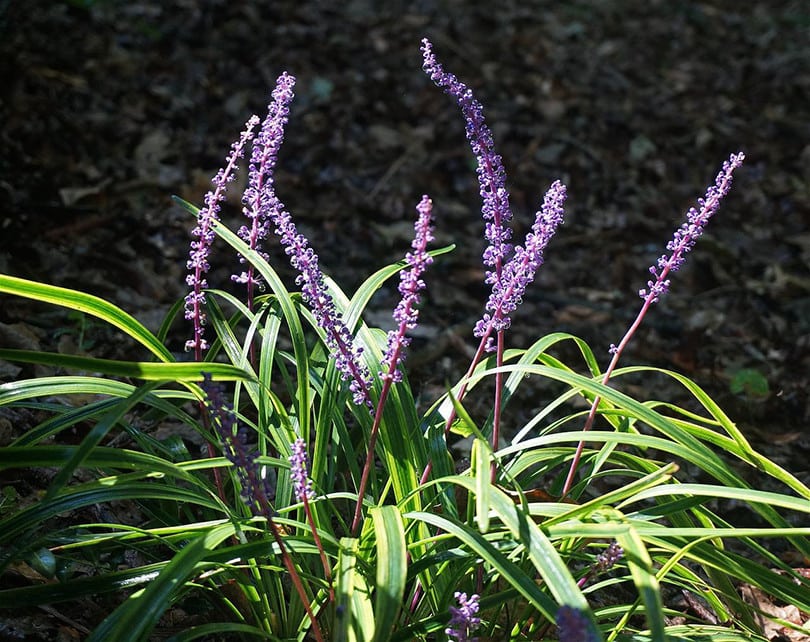Monkey Grass: Care & Growth Guide for Liriope
-
Kristin Hitchcock
- Last updated:

Monkey grass is touted as one of the best low-maintenance options for hot summers. As you’d expect, this species is used as ground cover. It is most prevalent in the American South since it is tough and tolerant of many ecological conditions.
This grass does not care if it is nibbled on by deer or in a drought. It grows either way. Plus, it is extremely thick, so weeds are not typically a problem.
With that said, there are two main species of monkey grass. Liriope is the species we will specifically be talking about in this article. It does well in filtered sun and full shade. Plus, it isn’t picky about the soil.
We’ll take a complete look at the care this grass needs—which honestly isn’t much.
When to Use Monkey Grass
There are many places where you can use monkey grass, depending on what you’re using it for. Most of this grass grows to about 10–18 inches in length. However, there are different types, and you need to keep in mind what you need the grass for when you are purchasing it.
The ground cover stays green all year round. Therefore, it is a nice carpet plant that should withstand both summers and winters in the American South and warmer areas. It also blooms in the late summer. The blossoms are typically white, purple, or pink, depending on the variant.
These blossoms provide showy contrast that you won’t find in many other types of grass. Therefore, many people select this plant mostly for its flowers. After blooming, the grass will produce clusters of small, black berries.

Types of Liriope
There are several types of liriope. However, these plants are grown similarly no matter what sub-species they belong to. The two main forms are spreading and clumping. These plants grow exactly as the name suggests.
The clumping plant grows in clumps and does not spread. It does not send out runners, which makes it good for lining walkways. You can also use it for décor in areas where you don’t want to do much maintenance.
The spreading plant is suitable for carpeting. It is a grass alternative in many cases, assuming you have the correct conditions.
How to Grow Liriope
You should grow monkey grass in areas that get partial shade or full sun. Filtered sunlight is often okay as well, though the grass may not be able to grow quite as well. It is not very picky about its soil, as we have previously stated. However, it is best in moist soil that also drains well.
Once the plants are established, they do not need much care. However, they can be sensitive to high heat situations when they are trying to become established. Even once established, the evergreen foliage declines significantly in cold weather when it typically stops growing.

How to Care for Monkey Grass
Caring for monkey grass is pretty easy. In fact, they basically require zero maintenance. It is drought-resistant and pest-resistant. You can plant it and leave it alone for the most part and you don’t even need to mow or trim it all that much. Many people only trim it annually, as it does not grow upwards very quickly.
Usually, it is recommended to mow them in the late winter to encourage more growth. You do need to cut it rather high, as you don’t want to injure the crown. Therefore, using monkey grass is much different than using any other kind of grass.
You can divide liriope every 4 years into new plants if you’d like. However, this is not necessary. Most people do not divide their plants.
Because this plant is drought-resistant, you do not have to worry about watering it. Even if it is rather dry, this plant is typically more than able to withstand it.
Sometimes, slugs and snails will chew on monkey grass. However, the damage is typically not very serious, so this is not something to worry about. If it does become serious, you can utilize snail traps to thin out the number of snails in the areas.
Conclusion
Monkey grass is common in the American South, as it is very suitable for the conditions. However, it is actually Asian grass—not a native. Still, it doesn’t require much care after it is planted and provides a decent level of décor. Therefore, it is an increasingly popular option.
After you plant this grass, you don’t actually have to do much to take care of it. It is extremely resistant to droughts and other problems. Snails do eat it sometimes, however, they do not regularly damage it to an extreme extent.
Featured Image Credit: YHBae, Pixabay
Contents
